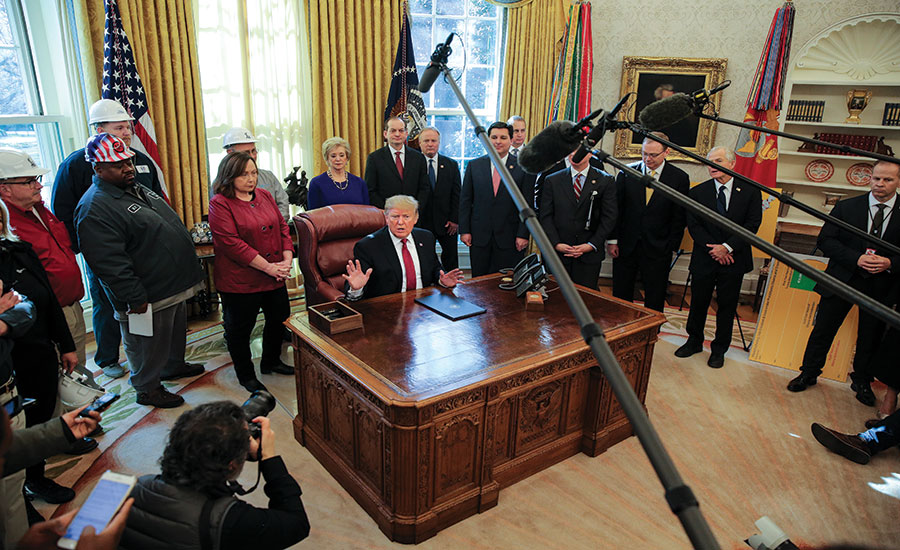Construction industry officials are poring over President Trump’s new executive order that aims to expand “Buy American” preferences for infrastructure projects. They want to determine what the impact will be. The Jan. 31 directive covers more types of materials and projects that use a much wider range of federal financial aid categories than a 2017 Trump order did.
It wasn’t immediately clear how the new executive order will apply to highways, the largest federally assisted infrastructure program. Federal-aid highway work is covered by a different preference program, called Buy America, which was created by a 1982 statute.
Brian Deery, senior director of the Associated General Contractors of America’s highway and transportation division, said on Dec. 31, “We’re still examining what the implications are.” Rich Juliano, American Road & Transportation Builders Association senior vice president for policy, said on Feb. 1 that he and many others were studying the issue. He adds, “We’re going to need the [U.S. Dept. of Transportation] to give us their interpretation of … how they see this as applying to the federal-aid programs, if at all, and what they intend to do.”
A Federal Highway Administration spokesman said on Feb. 5, “An assessment of the ‘Buy American’ executive order and its implications for the federal-aid highway program is still underway.”
The new Trump directive applies to many other infrastructure sectors, including airports, energy, water and ports. It is a follow-on to the 2017 Buy American order, which focused largely on trimming agencies’ use of domestic-preference waivers that allow use of foreign products.
The 2017 order applied Buy American policy only to projects using federal grants, but the new one broadens the preference to cases where “federal financial assistance” is used. Peter Navarro, Trump’s trade and manufacturing policy aide, said financial assistance refers to loans, loan guarantees, insurance and interest subsidies, as well as grants. In fiscal 2016, he said, the narrower 2017 order excluded more than $45 billion in infrastructure projects.
Shortly before signing the new directive, Trump said, “We want American roads, bridges, and railways and everything else to be built with American iron, American steel, American concrete and American hands.”
The directive doesn’t appear to be an outright mandate. It says agency heads shall “encourage” entities receiving federal infrastructure aid “to use, to the greatest extent practicable,” U.S.-made steel, iron, cement, aluminum and manufactured products. The federal highway Buy America program applies only to “steel, iron and manufactured products.”
There is a federal Buy American law, enacted in 1933, but it “primarily deals with direct procurement of the federal government,” such as purchases of construction materials, says Juliano. Federal highway funds totaled $47.5 billion in 2018. The majority of that has flowed to states, not as direct grants, but as reimbursements for funding that states committed to projects.
Navarro said that the Buy American policy wouldn’t increase costs for steel customers. He asserted that when new capacity is added, “over time … you will see steel prices again begin to moderate and go back down.”



Post a comment to this article
Report Abusive Comment